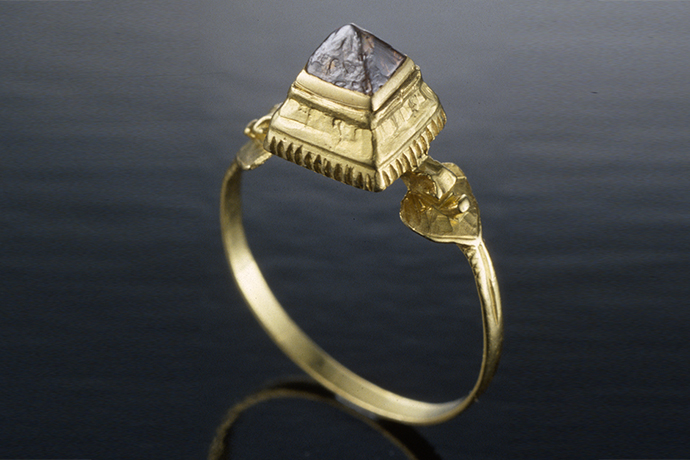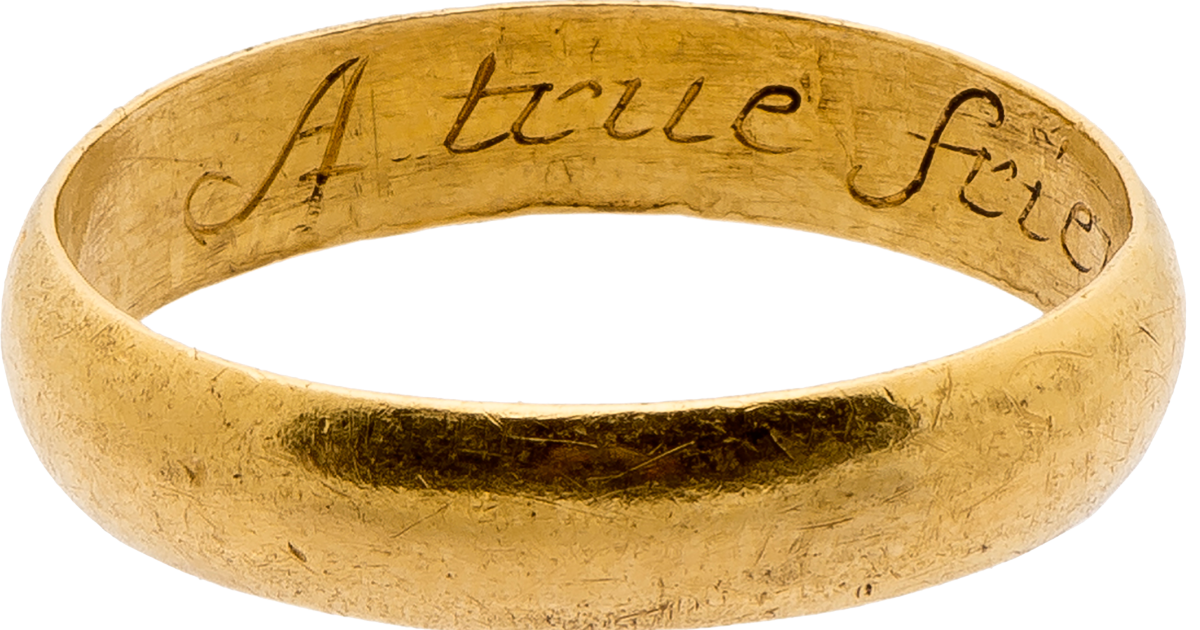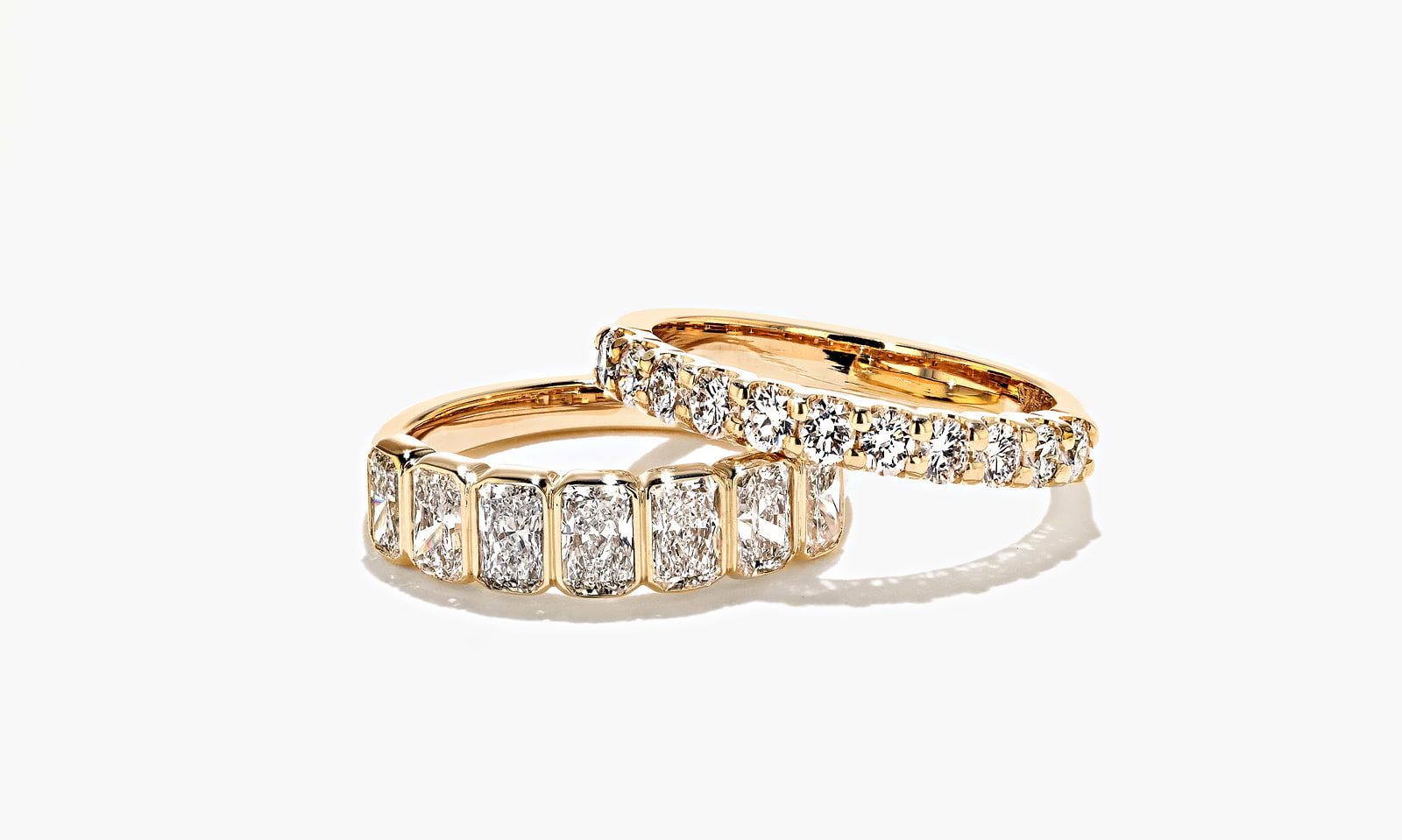
Wedding rings have long stood as a universal symbol of love, unity, and lifelong commitment. But behind this age-old tradition lies a fascinating history that stretches back thousands of years. From ancient civilizations to modern-day customs, wedding rings have evolved dramatically. Let’s explore their hidden past and understand their significance in society.
Table of Contents
The Origins of the Wedding Ring
Ancient Egypt: Where It All Began
Over 3,000 years ago, the ancient Egyptians crafted rings out of braided reeds and hemp. They placed these rings on the fourth finger of the left hand, believing it contained the “vena amoris” — a vein directly connected to the heart. For them, the circle represented eternity, and the empty space inside the ring symbolized a portal to the future. This tradition laid the foundation for what would become a worldwide custom.
Roman and Greek Influence
The Romans adopted the practice but replaced plant materials with iron and later gold to signify strength and permanence. Greek culture, meanwhile, integrated gem-engraved rings and more elaborate metal designs. During this era, rings began to represent not just love but also legal agreements between families.
Evolution of Ring Design and Symbolism
The Middle Ages: Rings of Loyalty
In medieval Europe, “fede rings” became popular. These featured two hands clasped together, symbolizing loyalty, unity, and partnership. They were often used in betrothals and signified trust.
What are the Fede Rings?

Fede rings are one of the earliest known forms of betrothal or wedding rings, with a rich history that dates back to ancient Roman times and continued well into the Middle Ages and Renaissance Europe. The name “fede” comes from the Italian phrase mani in fede, meaning “hands in faith.” The defining feature of these rings is the depiction of two hands clasped together, often symbolizing the joining of lives, loyalty, and trust.
This imagery of clasped hands — known as the “dextrarum iunctio” in Roman culture — represented a pledge of faith, making fede rings a fitting choice for engagements or weddings. In their earliest versions, these rings were made of bronze, silver, or gold, and the hands were sometimes engraved with incredible detail.
During the medieval period, fede rings were often exchanged during betrothal ceremonies and carried deeply sentimental meanings. The motif became especially popular in England, Ireland, and Italy, and eventually inspired the development of the Claddagh ring in Irish tradition — which features a heart held by two hands and topped with a crown.
While many fede rings from antiquity have been preserved in museum collections, modern jewelers occasionally revive this historical design for custom or vintage-style wedding bands. The enduring appeal of fede rings lies in their simplicity and deep symbolism: two hands, one promise.
Today, fede rings are seen not only as romantic relics of the past but also as powerful emblems of human connection. They remind us that before diamonds and gemstones took center stage, the most important symbol of love was the gesture of giving one’s hand in faith and fidelity.
The Renaissance Era: Poesy Rings
During the Renaissance, rings inscribed with romantic poetry or love phrases — called “poesy rings” — gained popularity. These rings became a way for couples to express their feelings in a tangible, lasting form.
What Are Poesy Rings?

Poesy rings, also spelled “posy” or “posie” rings, are a charming and historic type of jewelry that originated in the Middle Ages and gained peak popularity during the Renaissance period. The name “poesy” comes from the French word poésie, meaning “poetry,” because these rings often featured short poetic inscriptions or romantic phrases engraved either on the inside or outside of the band.
Originally exchanged as tokens of affection, betrothal, or marriage, poesy rings served not only as beautiful adornments but also as heartfelt messages between lovers. Unlike modern rings, which often emphasize gemstones or luxury, poesy rings prioritized the emotional and literary value of their inscriptions. Phrases such as “Unite two hearts,” “Forget me not,” or “Love conquers all” were common, and were usually written in Latin, Old French, or English.
These cherished pieces of jewelry were especially popular in England and France during the 15th through 17th centuries. They were frequently made of gold or silver, and the craftsmanship of the engraving was considered a reflection of the giver’s sincerity and status.
Today, original poesy rings can be found in museum collections like the Victoria and Albert Museum in London, showcasing the sentimental and poetic essence of romance in earlier times. Modern jewelers also create poesy-inspired rings, often customized with personal messages, affirming their timeless appeal.
As both historical artifacts and enduring symbols of love, poesy rings remind us that words—just like precious metals—can last a lifetime.
The Rise of Diamonds in the 15th Century
The first recorded diamond engagement ring was given in 1477 by Archduke Maximilian of Austria to Mary of Burgundy. This marked a turning point where diamonds became associated with eternal love and commitment, though they remained reserved for nobility due to their rarity.
Who is Archduke Maximilian ?
:max_bytes(150000):strip_icc()/800px-Emperor_Maximiliano_around_1865-57ba790c5f9b58cdfd4c5f4d.jpg)
Archduke Maximilian of Austria (Maximilian Eugen Ludwig Friedrich Philipp Ignatius Josef Maria; 13 April 1895 – 19 January 1952) was a member of the House of Habsburg-Lorraine and the younger brother of Emperor Charles I of Austria. Born in Vienna, Austria-Hungary, he was the second son of Archduke Otto of Austria and Princess Maria Josepha of Saxony.
During World War I, Maximilian served as a major in the Austro-Hungarian Army and held the rank of corvette captain in the Austro-Hungarian Navy. In February 1917, he was sent to Berlin to formally notify German Emperor Wilhelm II of his brother Charles’s accession as Emperor of Austria. In June 1918, Maximilian led the Austrian assault on Dosso Alto, during which a nearby shell explosion caused partial deafness. For his service, he was awarded the Grand Cross of the Order of Leopold with war decoration and swords.
After the war, with the fall of the Austro-Hungarian Empire and the establishment of the Republic of Austria, Maximilian chose to live in exile rather than renounce his dynastic rights. He and his family resided in Switzerland, Bavaria, and later France. In exile, he occasionally used aliases such as Count Wernberg and Count von Kyburg. He earned a Doctor of Laws degree during this period.
On 29 November 1917, Maximilian married Princess Franziska zu Hohenlohe-Waldenburg-Schillingsfürst. They had two sons: Ferdinand (1918–2004) and Heinrich (1925–2014). Maximilian died of a heart attack on 19 January 1952 in Nice, France, at the age of 56. Initially interred in Altshausen, his remains were reburied in the collegiate church of St. Peter in Salzburg on 4 April 2019.
Modern Symbolism and the Commercial Boom
The Myth of the “Vein of Love”
While modern science has disproven the existence of a special vein connecting the ring finger to the heart, the sentiment persists. The tradition of wearing a wedding ring on the left hand continues in many Western cultures as a romantic gesture.
De Beers and the Marketing Revolution
In 1947, the De Beers company launched the now-iconic slogan “A Diamond is Forever.” This campaign reshaped societal norms and firmly positioned diamond rings as a necessary part of engagement and marriage. It also led to a boom in the diamond industry, changing the economic landscape of modern jewelry.
About De Beers Group

De Beers Group is a globally renowned diamond company, established in 1888 by Cecil Rhodes in South Africa. Initially, it consolidated numerous mining operations to form De Beers Consolidated Mines, Ltd., effectively monopolizing diamond production and distribution in South Africa . Over time, De Beers expanded its influence across the diamond industry, encompassing mining, trading, retail activities and wedding rings.
At its peak in the 1980s, De Beers controlled approximately 80% of the global diamond market. However, the company’s dominance has waned due to increased competition, economic shifts, and the emergence of lab-grown diamonds . Currently, De Beers operates in over 35 countries, with mining activities in Botswana, Namibia, South Africa, and Canada. The company employs more than 20,000 people worldwide.
De Beers is majority-owned by Anglo American (85%), with the remaining 15% held by the Government of the Republic of Botswana . In recent years, De Beers has faced challenges from the growing popularity of lab-grown diamonds, which are more affordable and visually similar to natural diamonds. In response, De Beers has invested in synthetic diamond production through its subsidiary, Element Six, focusing on industrial applications.
Despite these challenges, De Beers continues to adapt by emphasizing ethical sourcing and sustainability. The company’s Code of Origin program ensures that its diamonds are conflict-free and contribute to social and environmental initiatives in their countries of origin . As the diamond industry evolves, De Beers remains a significant player, navigating the balance between tradition and innovation.
Cultural Variations in Wedding Rings
India: Rings Beyond the Fingers
In Indian tradition, married women often wear bichiya, toe rings, in addition to finger rings. These signify marital status and are typically crafted from silver.
Middle Eastern Puzzle Rings
In some Middle Eastern cultures, puzzle rings are exchanged. These intricately linked rings symbolize the complexity and intricacy of relationships — each part representing an element of the union that must work together in harmony.
Social and Economic Impact
The tradition of exchanging rings has given rise to a multibillion-dollar global jewelry industry. From artisanal makers to high-end luxury brands, wedding rings have shaped economies, employment sectors, and personal investments.
Symbolically, rings offer a visible representation of identity, emotional connection, and social status. Their styles, stones, and craftsmanship often reflect individual personalities and family heritage.
Conclusion
The use of rings in marriage is more than just a cultural custom — it’s a narrative of human history, emotion, and innovation. From humble beginnings in ancient Egypt to modern diamond-studded designs, wedding rings have carried stories of love, power, and connection through centuries. Understanding their journey helps us appreciate the depth of this timeless symbol.


